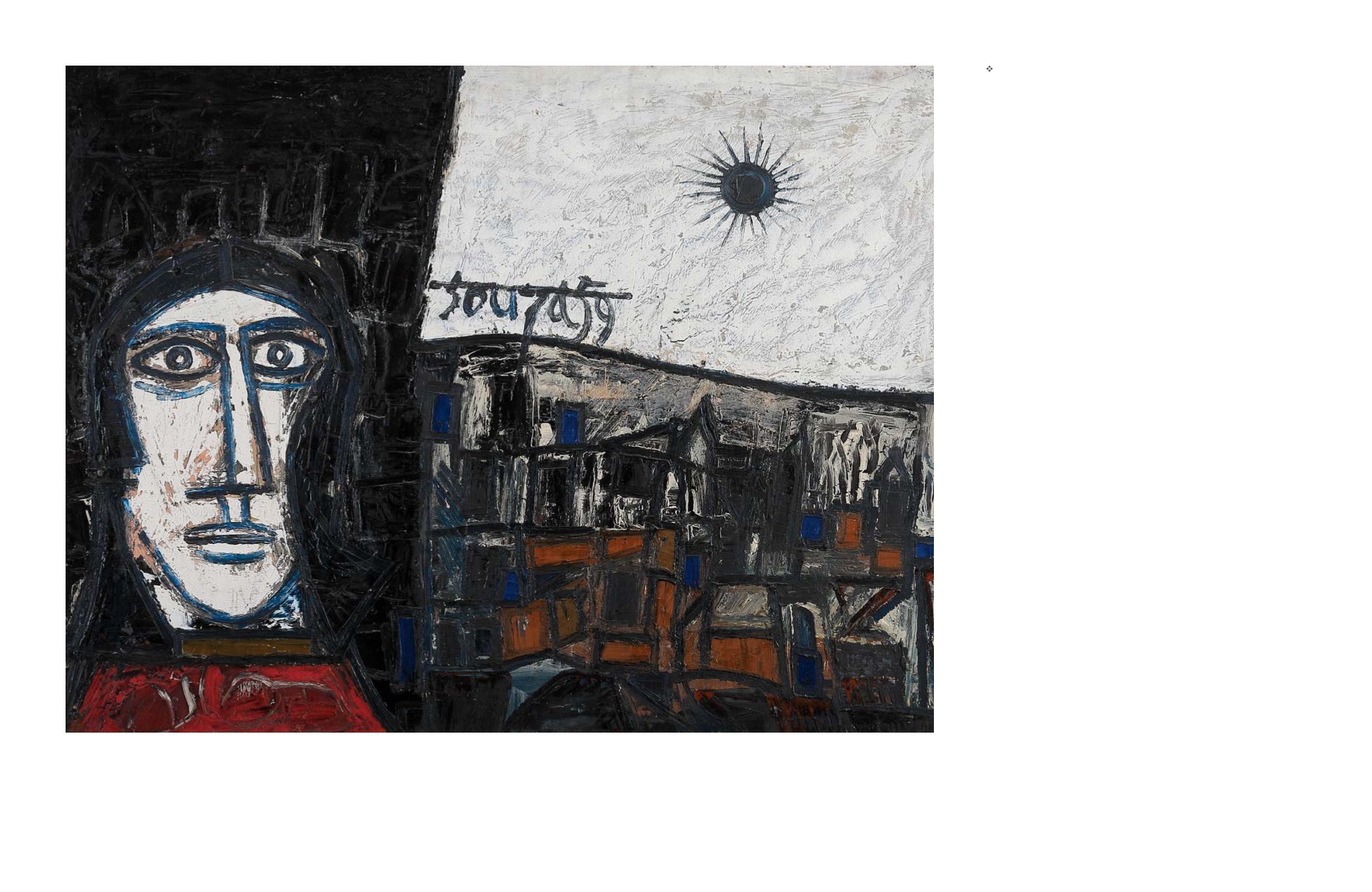

46
NOVEMBER 2016 | THE TIES THAT BIND
47
43
F N SOUZA
(1924 - 2002)
Untitled (Landscape and Face)
Signed and dated 'Souza 59' (centre)
1959
Oil on board
29 x 37.5 in (73.5 x 95.5 cm)
$ 180,000 - 240,000
Rs 1,18,80,000 - 1,58,40,000
PROVENANCE
Gallery One, London
Christie's, London, 17 October 2003, lot 508
Sotheby's, New York, 17 September 2009, lot 14
Private Collection, New Delhi
Private Collection, UK
PUBLISHED
Gayatri Sinha ed.,
Art and Visual Culture in India 1857-2007
,
Mumbai: Marg Publications, 2009, p. 4 (illustrated)
The present lot juxtaposes two of Souza’s favourite subjects, the
figure and the cityscape. He creates an unlikely balance between
the large figure on the left and the uninhabited landscape to the
right of the frame. The structural duality is enhanced by the black
and white sky in the two sections of the painting, with only hints
of red tying both together.
The stark black sun offers a counter-point to the staring eyes of
the boldly delineated, classically featured face. In later years, Souza
wrote, “Black is the most mysterious of all colours. Renoir found it
impossible and said a spot of black was like a hole in the painting.
I cannot agree...” (FN Souza, “Paint it Black, Review of Black Art and
Other Paintings,”
The Observer
, 15 May 1966)
The black sun, a rare motif for Souza, is a recurring subject among
some of Souza’s fellow Progressives, like Raza and Husain, for whom
it is a critical feature of their aesthetic language.
The cityscape is drawn with Souza’s powerful lines and energetic
forms: “Souza’s landscapes... seem to be driven by a cataclysmic
force, which wreaks havoc. Most of these cityscapes are following,
at first, a simple rectilinear structure, which later, in the 1960s, gives
way to an apocalyptic vision.” (Yashodhara Dalmia,
The Making of
Modern Indian Art: The Progressives
, New Delhi: Oxford University
Press, 2001, p. 93)


















